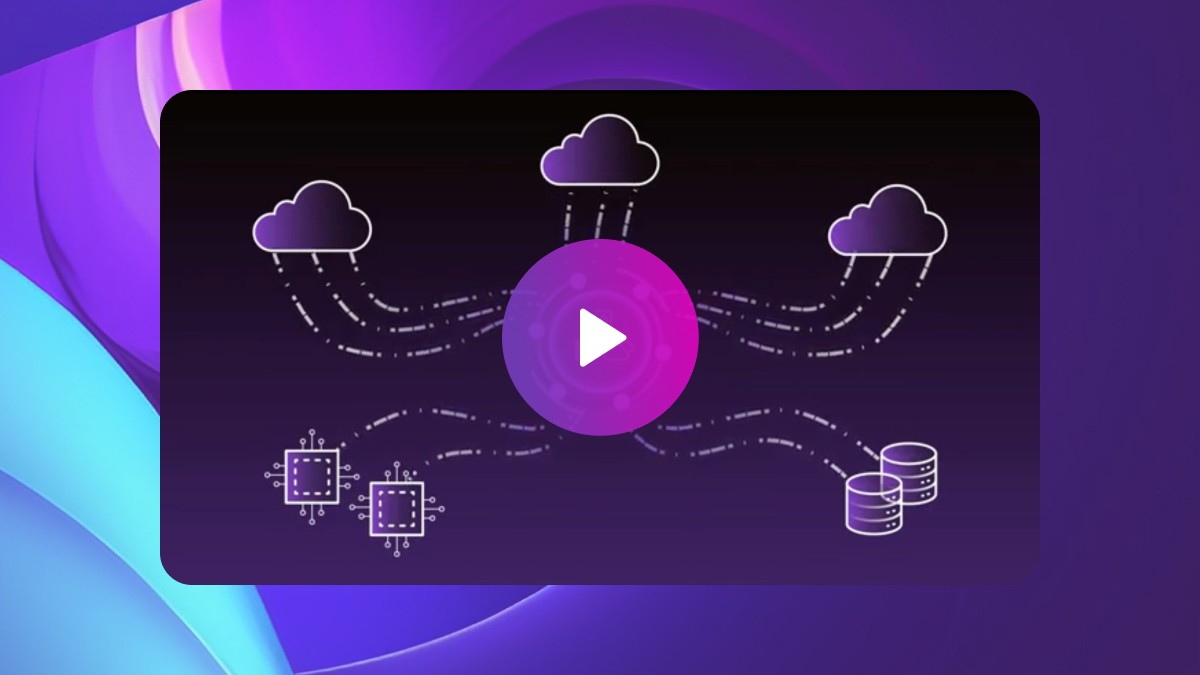What Is Big Data Analytics & What Are the Benefits?

Curious about big data analytics? We explain what big data analytics is and how to gather insights from the large amounts of data created by modern businesses.
What is big data analytics?
Big data analytics analyzes data that is too large or too complex for traditional database systems. Big data analytics is used to uncover patterns and gather information for use cases such as the following:
- Genomic research
- Product development
- Oil exploration and discovery
How Does Big Data Analytics Work?
We all generate massive amounts of data in modern business and consumer life. Contextual information regarding shopping, travel, energy consumption, housing, leisure activities, and countless other behaviors produces the data collected, stored and processed via cloud and analytics platforms. As the sheer volume of available data grows, the quality of insights and applications from that data also growsl.
Big data analytics is a discipline that evolved from traditional analytics, encompassing different sets of research and engineering applications. Big data analytics have kick-started an entirely new wave of innovation in complex fields like machine learning and artificial intelligence, genomic sequencing, and logistical analysis.
But what is big data analytics? It uses cloud platforms and other advanced technology to ingest, organize, and process amounts of data previously unheard of to support advanced decision-making and machine learning applications. Rather than rely on databases that work with limited quantities of structured data, a big data platform can work with large sets of unstructured data from a number of disparate sources to produce real results.
Big data analytics works through the implementation of advanced technologies in critical analytics processes, including the following:
- Data Collection: Before data can be analyzed, it must be collected. Big data analytics begins at the point of collection. This can be through a customer relationship management platform or enterprise resource planning software that gathers information on user behaviors and trends, through legacy gateway products pulling information from databases, or through apps delivering data via mobile apps and IoT edge devices.
- Data Processing: One of the strengths of a cloud-based analytics platform is that it can collect all sorts of data from nearly any reasonable source. Data processing allows these platforms to take structured and unstructured data, organize it, and prepare it for use within a system.
- Data Cleaning: To get better results from data, cloud analytics platforms support data scrubbing to ensure the integrity of the information gathered. This can include eliminating duplicates, removing irrelevant or corrupted data, and ensuring that information meets the needs of the current operational focus.
- Data Analysis: The actual analysis of the collected, processed, and cleaned data can include methods like data mining, deep learning, and predictive analytics.
What Is Big Data Architecture?
Engineers and scientists use deep, robust, and often complex architectures to support such massive data-driven undertakings. While different architectures will form around different applications, generally speaking, there are several standard components for every data analytics platform:
- Data Sources: “Data sources” doesn’t refer to people or devices specifically but to the interactions between users, their devices, and data-collecting interfaces. This can include information used in a CRM platform, recorded behaviors in online portals, and even data collected from sensors attached to machines on a manufacturing floor.
- Data Storage: Storing terabytes of data is a challenge. Cloud platforms need to contain massive amounts of readily available storage. Still, that storage must be available for provisioning based on scaling demands and support high-performance data analytics or high-volume workloads.
- Batch or Stream Processing: Processing in the practice of preparing large quantities of data for use. Depending on the demands of the analytics platform, this processing can either require delayed or on-demand processing. Batch processing is the practice of performing operations on data at rest in storage. Stream processing is the practice of processing data in real time as it enters the system for immediate consumption.
- Analytical Data Stores: When information is ready to run analytics on, many systems will place the structured form of that data into a local store where the analytical tools can readily access it, using it to perform queries and other processes.
- Analysis: The analysis hardware and software can include multiple different features, including data modeling, business intelligence engines, self-serve intelligence application development tools, interactive data exploration notebooks, and data visualization and reporting capabilities.
- Data Orchestration: Coordinating operations between source, storage, processing, and analysis is complex and, in cases of data analytics, beyond the capabilities of a human operator. Orchestration tools, often driven by automated or AI systems, will manage data movement through the platform and, if possible, optimize internal processes.
What Are the Challenges and Benefits of Big Data Analytics?
As with most cloud technologies, big data analytics comes with a series of benefits and challenges that any organization must consider.
Some of the benefits of a data analytics platform include the following:
- Informed Decision-Making Practices: As with analytics as a whole, data platforms bring insights into customer or organizational behaviors that can inform how your business makes decisions on a broad scale. While data-driven decision-making is always sought after by business and technical leaders, big data analytics provide even more accurate and useful intelligence. Furthermore, these insights usually come with unique and customizable visual dashboards that allow users to develop tailored views of data so that all their analytics are focused on specific business goals.
- Artificial Intelligence and Machine Learning Development: Machine learning has long faced the limitations of hardware and data to efficiently and effectively train algorithms. With data platforms and analytics in place, these algorithms can learn strategies that they never could have previously. Additionally, the analytics allow admins and engineers to observe and control how these algorithms learn.
- Powerful Research Capabilities: Big data isn’t as limited in scope as traditional analytics. Instead of having a smaller band of questions or issues that your organization looks at, big data can provide a large canvas for data scientists and researchers to make connections they previously would not have even dreamed of.
- Fraud Detection: Modern digital fraud is a major problem. According to the Aite Group, fraud cost businesses $712.4 billion in 2020, and the trend seems to increase every year. Analytics can help fraud experts and AI detect suspect behavior earlier while providing intelligence into where fraud seems most prevalent (and preventable).
Likewise, there are several challenges that come with implementing data analytics:
- Managing Data: For data analytics to provide meaningful intelligence, it must be clean, useful, and aligned with analytical goals. Therefore, the platform used to perform such analytics must be built and managed to accomplish this task. Maintaining data integrity and usefulness calls for organizations to monitor their analytics system to optimize and correct issues constantly. More importantly, these organizations must come to their platform with a robust and accurate data governance policy to support their analytics goals.
- Compliance and Security: With so much data moving through a cloud system, it’s only a matter of time before that information is exposed to potential vulnerabilities. Big data analytics platforms can introduce significant challenges to maintaining proper cybersecurity postures and compliance requirements day after day.
- Costs: Big data platforms can be expensive. Even working through third-party vendors, while less costly than self-driven infrastructure, can call for significant investment capital upfront.
WEKA for High-Performance and Big Data Analytics
Big data analytics requires advanced technology, including high-performance computing that can handle stream processing, scalable storage, and intense workloads.
WEKA provides such an infrastructure with the following features:
- Streamlined and fast cloud file systems to combine multiple sources into a single high-performance computing system
- Industry-best, GPUDirect Performance (113 Gbps for a single DGX-2 and 162 Gbps for a single DGX A100)
- In-flight and at-rest encryption for governance, risk, and compliance requirements
- Agile access and management for edge, core, and cloud development
- Scalability up to exabytes of storage across billions of files
Contact us to discover how WEKA can power your big data analytics today, tomorrow, and into the foreseeable future.
Additional Resources
WEKA for High Performance Data Analytics (HPDA)
How GPUDirect Storage Accelerates Big Data Analytics


